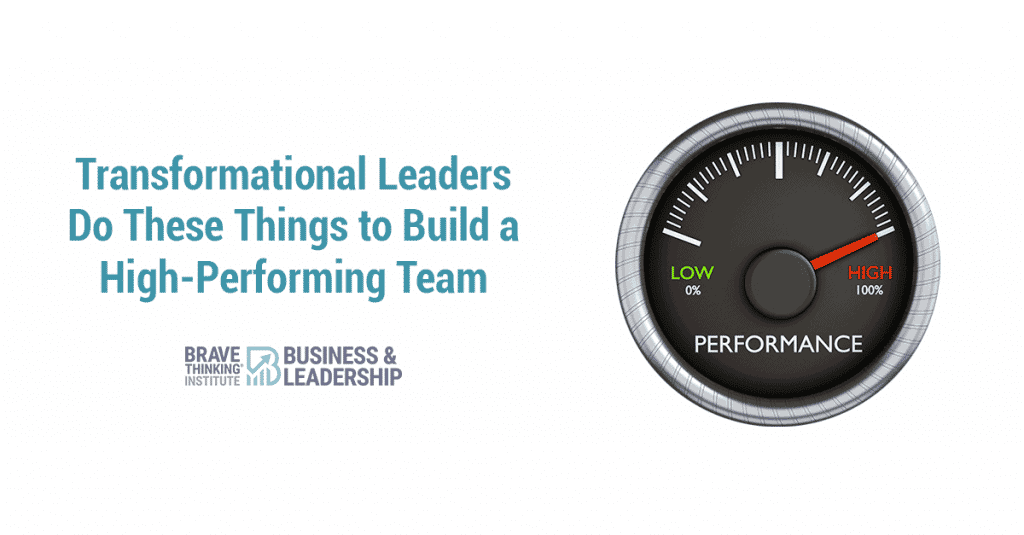Learn how Transformational Leaders build teams with top talent and great retention
Talent wins games, but teamwork and intelligence win championships.
Michael Jordan
How much have you thought about what it takes to build a high performing team?
It’s a good question.
High performing teams are not built by chance.
You all know that great leaders don’t just “get lucky” and have an amazing team of highly motivated, brilliant, and talented people fall into their laps.
There’s an art to leading that makes all the difference in the results you’ll get, and the joy they experience in your organization.
Just for a minute, form a picture in your mind of the most awesome team you’ve ever seen.
What does that look like?
Is it a sports team?
Are you thinking of the Bulls’ era of Michael Jordan from the quote above?
Or maybe there’s an era from your favorite sports team that you just loved. Usually when teams perform well, the players just make it super fun to watch. You can see their joy in the game.
Maybe you’re thinking of the guys who started Microsoft or Apple, or some other company that reached heights you aspire to.
Now, let me ask you this… if you think of the most amazing team ever, does the team you lead even enter your thoughts?
It would be pretty cool if it did, right? Wouldn’t you want to lead that team?
Today, I’m going to tell you how you can.
High performing teams don’t just happen. You build them.
And that’s exactly what we’re going to discuss here. We’ll talk about what makes a high performing team. And I’m giving you five tips to help build that super achieving team as a Transformational Leader.
Are you interested in leading the ALL STAR team of your industry? You don’t want to miss today’s post.
If you’re looking for more information on how Transformational Leaders motivate and inspire their teams, download your free eBook today.
It’s packed with great advice to help you develop the skill set it takes to achieve greater success and influence.
What Makes a High Performing Team?
A high performing team is categorized as one that consistently reaches and exceeds expectations.
These teams are made up of individuals who each bring a core of experience that, when aligned in common goals, helps the overall team function in a more productive and efficient way.
There are many ways to measure performance, but there are some similarities that every high performing team tends to have in common.
- They work in alignment. Team members may have different skills and positions, but they’re all working for the same goal.
- They raise the bar on performance. High performance isn’t just a catchphrase here. A team that falls into this category will outperform other teams in their industry or even their own organization.
- Excellent collaborative abilities. A team that reaches the highest level of achievement works well together. Individual members use their skill set to compliment each other in moving toward the overall goal.
- Mutual respect. A good working relationship is essential in a high performing team.
No matter which performance metrics you’re aiming for, it’s essential that the goals are clearly defined. Each team member should be supported.
The atmosphere of a great team is one where each member contributes in meaningful ways that they can be proud of. Because they’re not just creating more wins for your organization, they’re growing as professionals, as well.

5 Tips to Build a High Performing Team
I won’t tell you that building this kind of team is easy. But it’s also not impossible.
There are real strategies that you can use to build a high performing team. And you can use the formula over and over.
With the winning approach, you’ll be able to build the best team wherever you are.
My five tips to build a high performing team are:
- Have the Right Captain
- Fill the Bus and Build the Bench
- Engage Your Team
- What Is My Relationship with Failure?
- By When?
1 — Have the Right Captain
Over the course of my career, I had some great captains.
But what makes a good captain?
It’s not always the best player or someone you’d think of as a standout performer.
The best captains are people who are supportive of the other players on the team. They take it upon themselves to make sure the other players have what they need to perform at the highest level.
Sometimes this might be encouragement. It could be mentoring or other types of support.
For a team to truly achieve greatness, your team needs the right captain.
2 — Fill the Bus and Build the Bench
To build a great team, first you must recognize the different roles that need to be filled to reach your goals. Each of those roles has its own unique qualities.
For instance, some roles demand an analytical mind that focuses on small details. Other roles might need more understanding of the bigger picture. Some roles are really creative and push boundaries. Some roles might need a more managed or structured workflow.
A Transformational Leader knows what roles must be filled, and the qualities needed for each.
This is about recruiting the right people for the right roles. But it’s also about keeping that recruitment pipeline open.
It’s important to recruit fresh, new talent to give your bench depth. When you have utility players who can move to different roles, that’s great. But you’ll also have superstars that fit a specific role.
To build a good team, it’s important to have all the right players and to understand where they work best.
3 — Engage Your Team
This sounds so simple, but a lot of leaders don’t engage their teams.
I had a situation once in my own career where this became so important.
I was tasked with taking on the worst performing in an entire organization.
That day, I walked in and just asked them, “Hey, you guys know that we’re last, right?”
The team knew they were the worst performing team. So I asked a follow-up question.
What are we going to do to turn it around?
That question turned into a conversation. They started to source ideas. They started to own where they were in terms of performance.
And then I asked, “What would it look like if we were number one? What would we have to do?”
They came up with a theme around being the greatest show on earth.
It became a theme that the whole team owned on a daily basis.
Is this the way the greatest show on earth shows up?
It made a massive difference. They became the number one team in the company. Not only that. They’re still the number one team, many years later.
Engage your people. Ask them, and they’ll own it.
4 — What Is My Relationship with Failure?
“If you’re not making mistakes, then you’re not doing anything.” – John Wooden
You can’t have success without any failure or mistakes.
Because success takes some risks, right?
Humans are fallible. Mistakes will happen. It’s how you handle them that determines your ultimate success.
In a winning culture, it’s safe to make mistakes.
Take a company like Disney.
In some of the greatest growth years of the organization, Michael Eisner created a fantastic relationship with the idea of making mistakes. In the annual meeting, they would even have a Greatest Mistake of the Year Award.
What level of risk are you celebrating in your organization?
Encouraging people to risk, to try, is important. And it’s essential that your people know it will be okay if they make a mistake.
High performers do better than average because they’re reaching for extraordinary goals. And that means a higher risk of missing.
5 — By When?
One thing that makes a difference between high performing teams and average teams is their ability to hold each other accountable for deadlines.
In Brave Thinking® Institute, we use this powerful two-word phrase, “by when?”
When someone takes on an important task or goal, they add a “by when” date.
We know it can be easy to get creative and come up with possibilities to move the needle.
If you have brilliant people on your team, they can come up with more ideas than they can launch. Even if they manage time perfectly, there’s only so many projects you can prioritize.
Having the idea won’t get you results. It’s the follow through that will do it.
Whenever you’re trying to move your performance to the next level, the idea is a first step. The next step is accountability.
So it’s important to clearly define when that action will be completed. By when?
Building a High Performing Team as a Transformational Leader
Today, we’ve talked a lot about the way your team performs. You’ve learned the characteristics of a high performing team. We’ve also talked about the differences between great teams and average ones.
You’ve learned about the role of leadership in filling positions and inspiring truly amazing performance. Because it’s not only about hiring the right people, it’s also about the way that you motivate and support them.
In today’s post, I’ve given you five tips to build a high performance team. I’ve found each of these tips invaluable in my own career.
I hope they help you lean into the task of building teams you can be proud of… so the next time someone asks you, “What’s the greatest team of all time?” your first thought will be of the team that you lead.
If you’d like to learn more about how Transformational Leaders cultivate the most amazing performance in their teams, I invite you to download my free eBook, 22 Great Qualities of a Transformational Leader.
It’s full of insights to help you unleash the leadership potential within for exponential growth.
Think Bravely and Act Boldly!



Leave a Reply